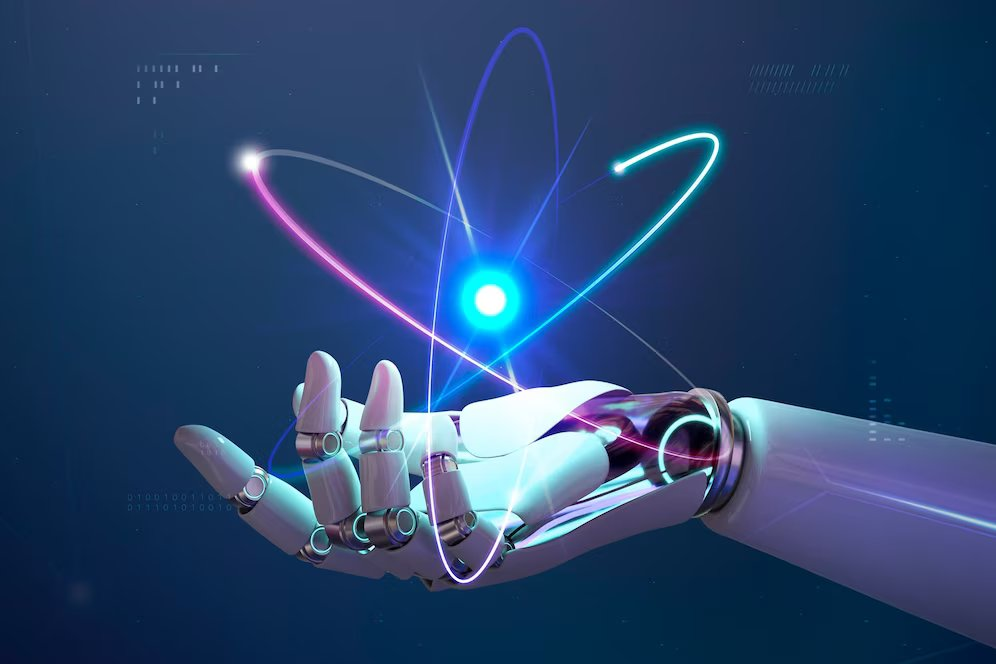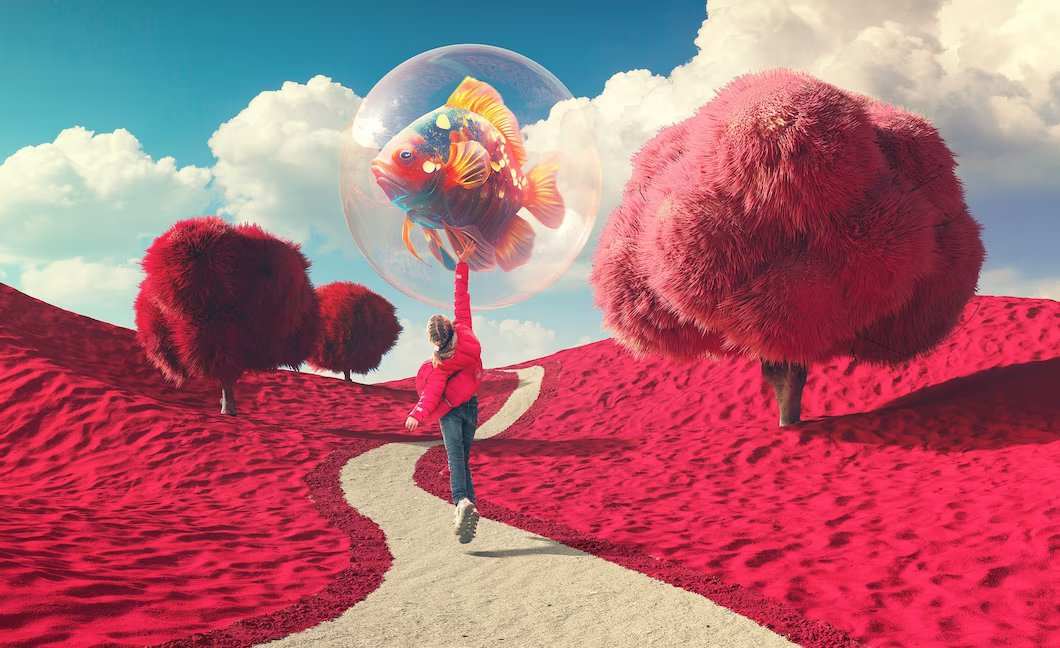The Impact of Artificial Intelligence in the World of Art
Artificial intelligence (AI) has reshaped how the world works upon its emergence in the digital realm. It has been a transformative force across different sectors, impacting how businesses operate and how individuals interact with technology.
But before we discuss further its lasting effect in different industries, let us understand what AI is and how AI works.
What is Artificial Intelligence (AI)?

Artificial intelligence is a multidisciplinary field of computer science that aims to create systems capable of performing tasks that typically require human intelligence.
Unlike traditional computer programs that operate based on explicit instructions, AI systems are designed to learn from data, adapt to changing inputs, and make decisions or predictions.
AI, machine learning, and neural networks are interconnected concepts, each one contributing to the development of intelligent systems.
Machine learning is a subset of AI that focuses on the development of algorithms and models that allow computers to learn from data, while neural networks are a specific type of machine-learning algorithm inspired by the structure and functioning of the human brain.
Together, these concepts form the foundation for developing sophisticated systems capable of learning, adapting, and performing tasks that traditionally require the never ending stream of human consciousness.
The overarching goal is to develop machines that can mimic various aspects of human cognition, such as problem-solving, learning, reasoning, perception, language understanding, and even creativity. Let us now discuss how it is affecting different industries worldwide.
The Increasing Influence of Artificial Intelligence Across Various Industries
AI has found applications across a wide range of industries, revolutionizing processes, enhancing efficiency, and enabling the development of innovative solutions. Here are some notable AI applications in some of the industries:
Healthcare
One of the major uses of AI in healthcare is for virtual assistants. They use AI technology for chatbots. This is usually done by a support nurse, acting as a virtual assistant.
However, because of AI-powered chatbots, the nurses are relieved from their job as virtual assistants, and they can now use most of their time dealing with actual patients in the hospital.
This AI application in healthcare is just the tip of the iceberg. A lot of researchers are looking for more ways on how to utilize the power of AI. In one study, AI is being employed in medical imaging for more accurate diagnostics, analyzing radiological images to detect abnormalities and assist in treatment planning.
Entertainment
When it comes to the entertainment industry, you might be familiar with some of these new techniques. One of the good example of AI in entertainment is managing personalized content.
It is being used to analyze user preferences and behaviors, powering content recommendation systems for platforms like Netflix and Spotify, providing a more personalized suggestion than other technologies. A great example is Spotify’s newest feature called DJ.
Aside from these industries, art is one of the main industries being affected by AI. Let us delve deeper into the applications of AI in the art world.
How Artificial Intelligence is Changing Art

In recent years, AI has emerged as a transformative force in new forms of art production, extending its influence into the realm of art and fundamentally reshaping how creative ideas are conceived and expressed.
Through generative algorithms, AI learns the ability to create AI-generated art, ushering in a new era where machines and human creativity collaborate to produce innovative and often surreal pieces. Because of this application, it has been influencing the creative process and expanding the horizons of artistic expression.
Generative algorithms have the unique ability to autonomously produce unique artworks without explicit text descriptions. In the creative process, artists input ideas or certain parameters into the algorithm, and from there, through deep learning, the algorithm creates a generative art that is diverse and sometimes unpredictable.
These AI-generated images are both innovative and distinctive, showcasing the harmonious combination of intentionality of the creative mind and computational ingenuity.
Generative algorithms not only challenge traditional notions of authorship among art generators but also introduce new possibilities for artistic exploration, pushing the boundaries of what can be envisioned and realized within the dynamic intersection of technology and creativity.
Advantages of Artificial Intelligence to Human Artists
Almost realistic images generated by AI could be overwhelming and scary, but keep in mind that these are tools that all of us could take advantage of and are not meant to replace human creativity. Here are some of the benefits of AI to every visual artist:
Efficiency in Workflow
The efficiency AI generated in the art industry empowers artists to focus on the core aspects of their creative vision, encourages experimentation, and contributes to a more streamlined and productive artistic workflow.
One example is using AI-generated art to automate photo rendering, generate images, coloring, and shading, among others. By taking this out of the artist’s hands, they would have more time focusing on their work, which leads them to finishing their work faster. With this in mind, they have the potential to create art and handle larger projects.
Adaptive Learning and Skill enhancement
By offering adaptive learning experiences to generate art, AI algorithms contributes significantly to skill enhancement within the art industry.
Human thinking and artistic genius benefits from tailored guidance, real-time feedback, and interactive learning environments, creating a dynamic and personalized approach to continuous artistic development.
Through the use of AI, artists can also explore different art styles, widening their creative expression. With the help of AI, they could explore different color combinations, textures, and effects that could give them the ability to create a unique artwork.
3. Widening the knowledge about the Art Market
By using AI techniques to widen knowledge about the art market, artists, as well as collectors and stakeholders, gain a comprehensive understanding of market dynamics.
AI tools can analyze vast amounts of new ideas from the art market and recognize patterns and trends not commonly available in human art. They shed light and derive knowledge by tracking the popularity of certain artistic styles, themes, or artists, allowing stakeholders in the art world to stay informed about evolving tastes and market demands.
Disadvantages of Artificial Intelligence to Human Artists
While Artificial Intelligence (AI) presents various advantages to artists, there are also potential disadvantages that artists may encounter:
Erosion of Artistic Authenticity
As AI technologies become increasingly sophisticated in generating art, questions arise about whether the authenticity of a human beings’ artistic processes is compromised. One reason is the lack of human emotion and intent in the art generated by AI.
Art should have depth in it. What makes a human creativity authentic is through the emotions and stories that the human artist bring into their work.
Mass production of artworks, compromising uniqueness
Another scary possibility is mass production of artworks. Computer scientists stipulate that AI can produce art at a rapid pace, raising concerns about the potential for mass production by art generators and the devaluation of individual pieces.
Traditional art often carries a sense of rarity and uniqueness, qualities that may be challenged when AI can replicate similar styles or themes endlessly.
Dependency on Technology
While it offers numerous benefits to artists, there are concerns about the possibility of the artists being dependent to AI-generated art as it might influence and overshadow the traditional manual aspects of artistic creation.
As mentioned, AI art generators could really help with efficiency through automation. However, artists may become overly dependent on AI for automated processes, such as image processing or even generating entire compositions of abstract art.
This outcome relies heavily on a diminished focus in manual, hands-on aspects of art creation that are integral to traditional artistic methods.
Diminished appreciation of traditional art forms
In addition, a strong dependency on AI may contribute to a diminished appreciation for the craftsmanship and manual skills involved in traditional art forms. The meticulous details and physical efforts put into creating art may be undervalued or overlooked in favor of digitally assisted processes.
Artists need to consciously assess the role of technology in their creative process, ensuring that it enhances rather than overshadows the authentic and individual aspects of their artistic expression.

Celebrate Life’s Milestones in Camella!
Make unforgettable memories in a Camella home.
Our communities are designed to elevate your living experience.


